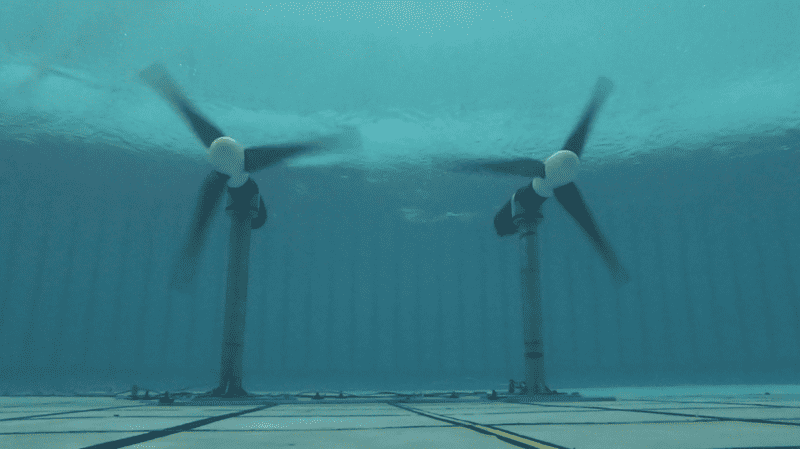
The Earth’s climate is an extremely complex system that is driven by the subtle balance of many different processes – a key one of which is the air-sea exchange of CO2. Monitoring the ocean’s uptake of CO2 is key to our understanding of climate change, and scientists at EPFL and at the Mediterranean Institute of Oceanography (MIO, France) have recently discovered a new part of the process. They identified a new source of organic phosphorus delivered from the atmosphere which potentially will help phytoplankton and microalgae growth, the latter of which play a crucial role in making our planet habitable. Organic phosphorus deposition to marine environments has not been studied till now, but this groundbreaking work showed it is an important – and completely overlooked – source of the critical nutrient, with important implications for climate. The scientists’ findings were recently published in npj Climate and Atmospheric Science.
Phytoplankton, which live on the surface layers of lakes, seas and oceans, need a variety of chemical elements to grow, the main ones being iron, nitrogen and phosphorus. An abundance of these nutrients allow phytoplankton to bloom and carry out the critical function of photosynthesis, during which large amounts of CO2 is absorbed from the air and converted to biomass, while also releasing oxygen. That makes them highly important to living organisms and gives them a crucial role in regulating the Earth’s climate. Phytoplankton also form the base of the aquatic food chain, which sustains marine systems, writes EPFL in a press release.
The supply and bioavailability of phosphorus affects the growth rate of phytoplankton, the rate at which they photosynthesize, hence the amount of CO2 they absorb. It is therefore important to identify all the ways in which marine ecosystems are fertilized; this can provide key insights into the climate system and how human activities affect it.
The full picture
“Scientists already knew that large amounts of inorganic phosphorus are transported to marine ecosystems by airborne dust in the form of phosphate minerals and ions. But this is an incomplete picture,” explains Kalliopi Violaki, the study’s lead author and a scientist at the Laboratory of atmospheric processes and their impacts (LAPI),which is part of EPFL’s School of Architecture, Civil and Environmental Engineering (ENAC).
Kalliopi Violaki organized and ran a two year-long research program at the MIO. During that time, she discovered that bioaerosols – airborne biological particles, such as viruses, bacteria, fungi, plant fibers and pollen -, contain significant amounts of organic phosphorus. Although its exact amount is still uncertain, we know it is significant because it is comparable to the amount of inorganic phosphorus that dust aerosols supply. In addition, organic phosphorus is often found in the form of phospholipids, a key component of cell membranes.
“Being aware that terrestrial ecosystems can fertilize marine ecosystems via bioaerosols gives us a completely new perspective,” says Athanasios Nenes, head of LAPI and co-author of the study. “This knowledge will help us better understand the processes that influence the carbon cycle and the climate.”
A major discovery
Organic phosphorus has not yet been incorporated into climate models, but doing so could prove to be a major improvement to understand how marine ecosystems respond to the ongoing climate crisis. Ocean layers differ from one to another in terms of density, temperature, oxygen level and salinity, and climate change is inducing further changes . This makes mixing between the layers more difficult and disrupts CO2 absorption. As the ocean becomes more stratified, it also becomes harder for nutrients available in the deep sea to reach the various layers. This could adversely impact marine habitats and the food supply for many marine species, particularly in remote areas that have limited phosphorus supplies. The new source of phosphorous may completely change how the Mediterranean (and other) seas are predicted to respond to a changing climate.
This study shows how important are the atmospheric particles to the environment. Despite being microscopic in size, variations in their supply could cause major changes to the whole climate system. The scientists will therefore conduct further research in order to better understand this new source of organic phosphorus and how it might influence the Earth’s climate.
Also interesting: ‘Harness the potential of the ocean and there will be enough energy for the entire world population’
Selected for you!
Innovation Origins is the European platform for innovation news. In addition to the many reports from our own editors in 15 European countries, we select the most important press releases from reliable sources. This way you can stay up to date on what is happening in the world of innovation. Are you or do you know an organization that should not be missing from our list of selected sources? Then report to our editorial team.






